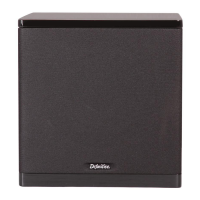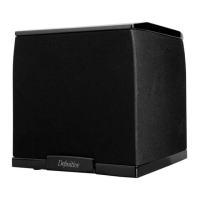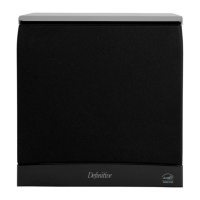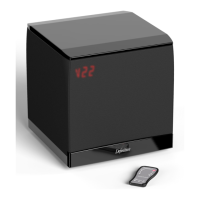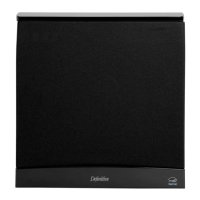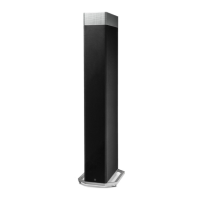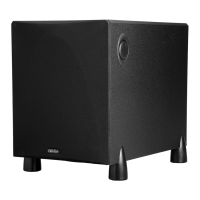experimentation
with
this
control
is
recommended
due
to
system
and
placement
variables;
there
is
no
"best
place"
to
set
it
other
than
where
it
sounds
best
to
you.
Powering
Up
the
Active
Subwoofer
Section
Your
SuperCube
subwoofer
contains
a
built-in,
active
powered
subwoofer
section
as
well
as
an
electronic
crossover.
Each
SuperCube
subwoofer
must
be
plugged
into
an
electrical
socket
(use
an
un
switched
outlet if
possible)
of
the
appropriate
voltage
(as
indicated
on
the
back
of
your
unit)
using
the
plug
on
the
end
of
the
black
cord
attached
to
the
electronics
module
on
the
back
of
the
loudspeaker.
The
SuperCube
subwoofer
has
a
special
circuit
which
automatically
turns
the
powered
subwoofer
section
on
when
a
signal
is
fed
to
the
loudspeaker
and
does
not
require
an
on/off
switch.
Please
note
that
if
you
hear
a
pop
from
the
speaker
when
the
amp
powers
up
or
powers
down,
this
is
normal.
The
red
LED
on
the
back
panel
will
light
up
when
a
signal
is
sensed
and
the
amplifier
turns
on.
Please
note
that
after
the
cessation
of a
signal,
it
may
take
up
to
an
hour
for
the
amplifier
to
actually
tum
off.
In
some
installations
where
radio
frequency
(RF)
remotes
is
present
in
the
area
the
red
light
may
remain
on.
This
is
nothing
to
be
worried
about
as
the
amp
will
be
in
low
idle
mode
which
uses
virtually
no
power.
To
prevent accidental damage to your subwoofer from overdriving the
system, the subwoofer features
an
internal overload protection circuit,
which will
turn
the subwoofer off
or
down when overdriven
or
over-
heated
and
will
then resume normal operation after a few minutes.
Very
Important:
Setting
Channel
Balance
and
Bass
Management
Systems
I
Dolby
Digital
and
DTS
5.1
(6.1,
7.1)
systems
and
decoders
have
a critical
channel
balancing
procedure for
the
left
and right front speakers, center channel,
rears and
subwoofer
(if
it
is
hooked
up
through
the
"LFE or
Sub
Out"
low-level
connection)
which
must
be
followed
if
the
system
is
to
perform properly.
We
have
spoken
with
many
system
users
with
problems
relating
to
the
overall
sound
of their
system
which
could
be
clearly
traced
back
to
improper
system
balance.
In
fact,
many
users
never
realize
that there
is
a
system
balance
procedure
to
be
followed.
Also
note
that
Dolby
Digital
and
DTS
5.1
(6.1,7.1)
systems
and decoders
have
bass
management
systems
(systems
which
direct
the
bass
to
the
various
channels)
which
vary
from
unit
to
unit.
This
bass
management
system
must
also
be
properly
adjusted.
We
have
spoken
with
many
system
users
with
problems
relating
to
the
overall
sound
of
their
system
which
could
be
clearly
traced
back
to
improper
bass
management.
In
fact,
many
users
never
realize
that there
is
a
bass
manage-
ment procedure
to
be
followed.

